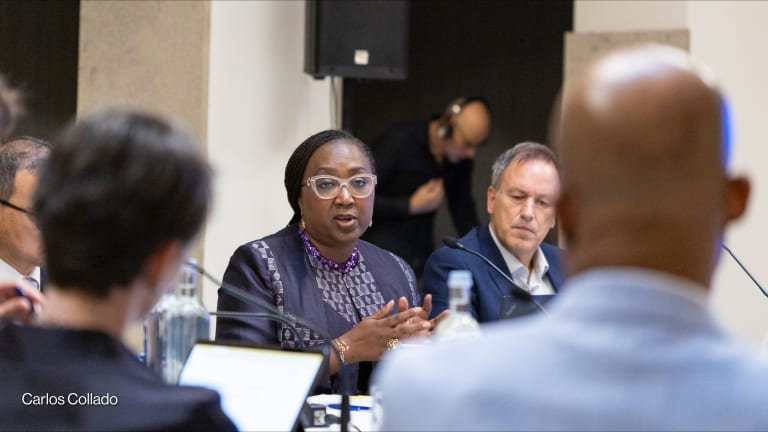
Cities all over the world are vulnerable to the effects of climate change: Rising global temperatures lead to more extreme weather conditions, such as flooding, droughts, and storms — all of which affect cities.
In addition, climate change is likely to increase rural-to-urban migration, increasing the pressures on urban infrastructure. In fact, the World Bank “Groundswell: Preparing for Internal Climate Migration” report estimates that up to 86 million people living in sub-Saharan Africa could be internally displaced as a result of climate change by 2050 — a large share of which are projected to move to cities.
In Uganda, the Kampala Capital City Authority has been working hard to mitigate and manage some of the disaster and climate change challenges. Nakyagaba Consolate Kiyingi, manager of risk management at KCCA, spoke to Devex about some of the key issues KCCA is facing, and how it is navigating those challenges.
This conversation has been edited for length and clarity.
Why did the city of Kampala decide to become involved in disaster risk reduction?
The city of Kampala is the capital city of Uganda and it contributes about 60% of the gross domestic product of the entire country. Due to this, there has been an increase in rural-urban migration as people look for opportunities and sources of livelihood in the city.
This has led to a number of challenges including increased pressure on available infrastructure and services, increases in slum populations, and environmental degradation, among others. The city has also faced disasters such as flooding, disease outbreaks, and crime.
KCCA realized a need to plan for Kampala to ensure that these stresses and hazards were properly managed and mitigated.
How have the Kampala city authorities worked to reduce risk?
We started by understanding the risks and vulnerabilities that affect Kampala city and its communities. Kampala undertook climate change and disaster risks assessments, developed strategies, and plans.
Sink or swim? An historic year of floods in Asia
Last year, China, Bangladesh, and Vietnam were among several Asian countries dealing with millions of displaced people from floods. How can Asian coastal cities prevent this from happening again?
Integration of disaster risk and climate change has been done with city development plans [and] with support of several partners, including the United Nations, World Bank, French Development Agency, politicians, academia, government ministries, departments and agencies, and representatives from the private sector and various vulnerable groups. This ensured that the process was inclusive.
Why is being inclusive so important, and how did you ensure inclusivity?
Inclusivity is very important — it is really critical to success — and also making sure you have buy-in from both city administrators, political leaders, and the stakeholders at various levels. Inclusivity involves identifying all critical stakeholders, and make sure they have a voice. For example, do your vulnerable groups include women, youth, and the disabled? You need to make sure they are all on board and have a voice and can participate in the development of your strategy. That is what we understand, on our side, as inclusivity.
One thing that we did in Kampala is work closely with an NGO that acts as a national union for disabled persons. And this NGO has been involved with each step — during the assessment phase and also when we were designing resiliency strategies.
What are some of the biggest challenges you have faced?
One of our biggest challenges has been securing political commitment. Political commitment is necessary to be able to prioritize and allocate funds for the different interventions. Unless that commitment is solidified we will have underfunded priorities related to resiliency to disaster and climate change.
Another issue is inadequate appreciation of the importance of disaster risk management at the community level. That is, communities realizing that they have a role to play in disaster risk management, and that they are our first lines of defense, and that they have actions to take.
How are you addressing challenges?
We are continually selling the DRR and climate change agenda to our political leaders and technical teams so that we are able to secure adequate funding to support the implementation of activities.
This means scaling up awareness on disaster risk management at all levels, bringing on as many people as possible, including vulnerable groups, and ensuring the mainstreaming resiliency strategies are done across all sectors.
Visit the Resilient Futures series for more coverage on the practical ways cities can build resilience and reduce disaster impact. You can join the conversation using the hashtag #ResilientCities.









